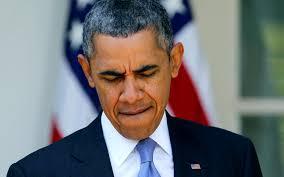In New Era of Terrorism, Voice From Yemen Echoes as France Declares ‘War’


For more than five years now, as Western terrorism investigators have searched for critical influences behind the latest jihadist plot, one name has surfaced again and again. In the failed attack on an airliner over Detroit in 2009, the stabbing of a British member of Parliament in London in 2010, the lethal bombing of the Boston Marathon in 2013 and now the machine-gunning of cartoonists and police officers in Paris, Anwar al-Awlaki has proved to be a sinister and durable inspiration.
Two of those four attacks took place after Mr. Awlaki, the silver-tongued, American-born imam who joined Al Qaeda’s branch in Yemen, was killed by a C.I.A. drone strike in September 2011. In the age of YouTube, Mr. Awlaki’s death — or martyrdom, in the view of his followers — has hardly reduced his impact. The Internet magazine Inspire, which he oversaw along with another American, Samir Khan, has continued to spread not just militant rhetoric but also practical instructions on shooting and bomb-making.
Two of those four attacks took place after Mr. Awlaki, the silver-tongued, American-born imam who joined Al Qaeda’s branch in Yemen, was killed by a C.I.A. drone strike in September 2011. In the age of YouTube, Mr. Awlaki’s death — or martyrdom, in the view of his followers — has hardly reduced his impact. The Internet magazine Inspire, which he oversaw along with another American, Samir Khan, has continued to spread not just militant rhetoric but also practical instructions on shooting and bomb-making.
Mr. Awlaki was born in New Mexico in 1971 while his Yemeni father was a graduate student, went with his family to Yemen at the age of 7 and returned to the United States at 19 to study engineering at Colorado State University. He discovered a knack for preaching and spent eight years as a highly successful imam at mosques in Denver, San Diego and Washington, where he preached at the Capitol and was a luncheon speaker at the Pentagon.
He came under F.B.I. scrutiny briefly in 1999 for contacts with known militants, and again in 2002 when agents discovered that three of the Sept. 11, 2001, hijackers had worshiped in his mosques. The national Sept. 11 commission raised the possibility that Mr. Awlaki was part of a support network for the hijackers, but the F.B.I. concluded that he had no prior knowledge of the plot.
In 2002, Mr. Awlaki moved to London, where he became a popular speaker and flirted more openly with militancy. After moving to Yemen in 2004, he began to espouse violent jihad against the United States and other countries he labeled enemies of Islam.
By 2009, when Mr. Awlaki was linked to Maj. Nidal Hasan, the Army psychiatrist who killed 13 people in a shooting at Fort Hood, Texas, the F.B.I., as well as the authorities in Canada and Britain, found that the cleric’s calls for violence were turning up on the laptops of nearly everyone they charged with plotting jihadist attacks. His website and Facebook page had attracted a large following across the English-speaking world, and scores of foreigners traveled to Yemen to meet him.
Continue reading the main story
“Awlaki was a huge magnet,” said Morten Storm, a Danish man who visited the cleric in Yemen, first as a convinced militant, and later, after growing disillusioned with Islam, as an agent of Danish, British and American intelligence agencies. Mr. Storm said the leader of A.Q.A.P., Nasir al-Wuhayshi, a former secretary to Osama bin Laden who now is the second-ranking figure in the global Qaeda network, remained a revered figure among jihadists.
“If you want old-school Al Qaeda, the place to go is still Yemen,” Mr. Storm said in a telephone interview.
In the case of Major Hasan, who asked his views on the religious justification for killing American soldiers, Mr. Awlaki declined to answer directly, sending two noncommittal replies. But by late 2009, the cleric had joined A.Q.A.P. and was helping to prepare Mr. Abdulmutallab for his airliner attack.
‘Operational’ Terrorist
After the underwear bomb fizzled, President Obama, judging that the cleric was now an “operational” terrorist, sought and received a Justice Department legal opinion declaring that killing him without a trial, despite his American citizenship, would violate neither the law nor the Constitution. During a 17-month manhunt, Mr. Awlaki called for the murder of cartoonists who insulted the Prophet Muhammad and helped A.Q.A.P. send bombs in printer cartridges to the United States on cargo planes; a Saudi tip foiled the plan. But the cleric’s followers kept getting arrested, including Roshonara Choudhry, who said, after listening to more than 100 hours of Mr. Awlaki’s lectures, that she had stabbed a member of Parliament who had voted in favor of the Iraq war.
The drone strike that killed Mr. Awlaki also killed Samir Khan and two other Qaeda operatives, and two weeks later, another American strike killed Mr. Awlaki’s 16-year-old son, infuriating many Yemenis. Obama administration officials have said the son, Abdulrahman al-Awlaki, also an American citizen, was not the intended target of the strike.
By then, in the fall of 2011, chaos in the wake of the ouster of Yemen’s longtime ruler, Ali Abdullah Saleh, had allowed Al Qaeda to seize large swaths of territory in the country’s south. In 2012, Yemeni forces, and American drones strikes, drove A.Q.A.P. out of the towns it had captured.
But in recent months, as a Shiite militia known as the Houthis seized power in Sana and elsewhere across Yemen, A.Q.A.P. has gained strength by rallying Sunni tribesmen against the Houthis. The growing violence, including numerous A.Q.A.P. bombings, underscores the failure of Yemeni and American efforts, including the drone campaign, to dismantle the group.
Dashed Hopes
American officials had hoped that the deaths of Mr. Awlaki and Mr. Khan, who were viewed as part of an A.Q.A.P. cell focused on attacking the United States and Europe, would curb the group’s ambitions. But A.Q.A.P. attempted a second underwear bombing of an airliner in 2012; it was foiled because the would-be bomber was an infiltrator sent by Saudi and Western intelligence agencies.
Continue reading the main story Continue reading the main story
Continue reading the main story
In April 2013, investigators found that the two Tsarnaev brothers, the Chechens accused in the Boston Marathon bombing, had been deeply influenced by Mr. Awlaki and had gotten their bomb-making directions from Inspire magazine.
The killings of A.Q.A.P.’s main English-language propagandists did not slow down its robust media production. In fact, A.Q.A.P. put out English-language videos and audio messages at a far faster rate in 2013 and 2014 than in earlier years, according to IntelCenter, a company that tracks jihadist media. Inspire magazine has continued to appear, and a 2013 issue called for the killing of Charlie Hebdo’s editor, Stéphane Charbonnier, among others. The Kouachi brothers sought out Mr. Charbonnier by name when they invaded the newspaper, and he was among the first to be killed.
Meanwhile, Mr. Awlaki’s voluminous work retains a huge following on YouTube and Islamic sites.
Most of the tens of thousands of Awlaki videos on YouTube feature his earlier, less controversial talks, which made him a best-seller on CD. But his later calls for attacks on America can also be found on the site without difficulty.
According to the company, YouTube prohibits material intended to incite violence, and it is removed when flagged by the site’s users and reviewed by the company’s paid staff. Some 14 million videos that violated YouTube’s rules were taken down in 2014. But company officials have wrestled with the free-speech implications of censoring material that may have news value or shed light on an important phenomenon like Islamist radicalism.
The graphic footage of the Kouachi brothers gunning down a French police officer, for instance, may technically violate YouTube’s standards but has been played on television around the world. “YouTube has clear policies prohibiting violent content or content intended to incite violence,” the company said, “and we remove videos violating these policies when flagged by our users. We also terminate any account registered by a member of a designated foreign terrorist organization.”
Mr. Berger, the Brookings fellow, said that while there had been a shift in online attention among jihadists from clerics to fighters, “most of Awlaki’s work is carefully constructed to be evergreen — it doesn’t become dated.”
“It will continue to be important for years,” he added.
Source: NY Times

Aden — Ports under the authority of Yemen’s internationally recognized government have received more than two million metric tons of fu…

Mukalla — Local authorities in Hadramout have announced the inauguration of Yemen’s first solar-powered cement station, a landmark proj…

AbuDhabi -- The United Arab Emirates has pledged $1 billion to bolster Yemen’s electricity sector, marking one of the largest development com…